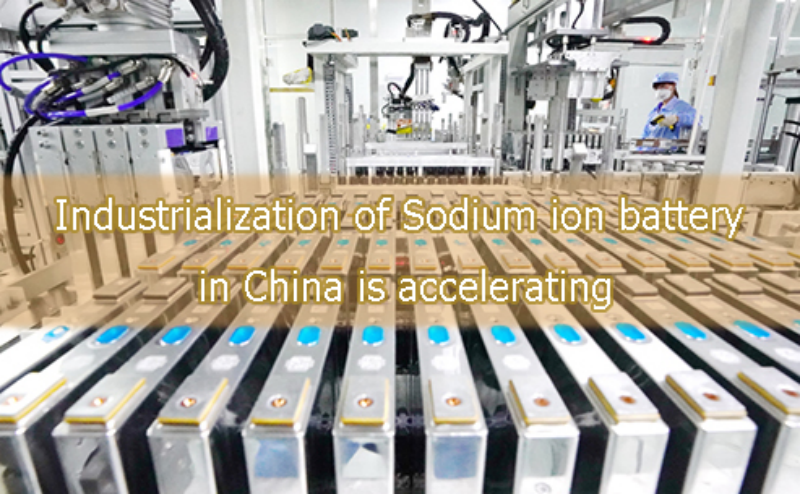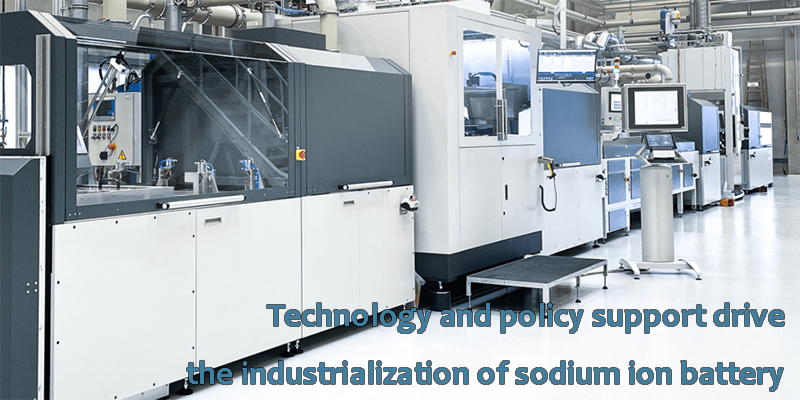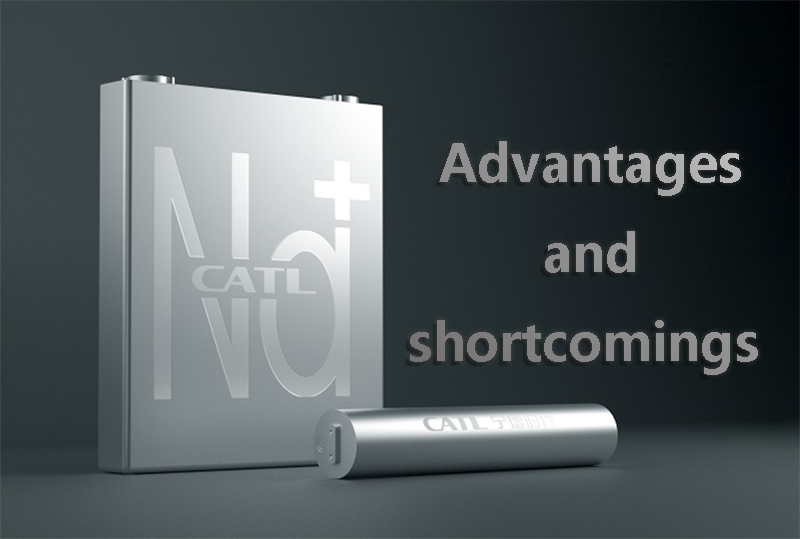
Main content:
- Technology and policy support drive the industrialization of sodium ion battery
- Advantages and current shortcomings of sodium-ion batteries
- Battery companies have made relevant layouts for sodium-ion batteries
- New materials and capital support to drive commercialization of sodium-ion batteries
- Good prospects for industrialization of sodium-ion batteries
1.Technology and policy support drive the industrialization of sodium ion battery
Based on technological accumulation and with the support of policies, the industrialization of sodium-ion batteries in China will begin to accelerate in 2022. The rapid development of the two major industries of electric vehicles and energy storage in the world has driven the rapid growth of the demand for lithium-ion batteries, the mainstream type of batteries. However, there is a sodium-ion battery with a lower cost than lithium batteries, which is being closely watched and deployed by the industry, and is expected to make some achievements in the energy storage and low-speed electric vehicle markets.
Recently, the Chinese government issued relevant documents, which mentioned the research and development of high-energy-density energy storage technologies such as sodium-ion battery and solid-state lithium-ion battery. As early as last August, the Chinese government stated that it would strengthen the layout in policy documents, starting from the promotion of cutting-edge technology research, improving supporting policies, and developing market applications, etc, to do a good job in top-level design, improve industrial policies, and coordinate and guide sodium High-quality development of the ion battery industry.

At the same time, the Chinese government also stated that it will implement the key project of "energy storage and smart grid technology" during the "14th Five-Year Plan" period, and list sodium-ion battery technology as a sub-task to further promote the large-scale and low-cost sodium-ion batteries. , to improve the overall performance. In fact, the reason why so much attention is paid to the industrialization of sodium-ion batteries is mainly due to its advantages in resource abundance and cost.
2.Advantages and current shortcomings of sodium-ion batteries
The working principle of sodium-ion batteries is similar to that of lithium-ion batteries. It mainly relies on the movement of sodium ions between the positive electrode and the negative electrode to realize charging and discharging. It can be compatible with some of the existing raw materials and production equipment of the latter. From the perspective of reserves, the reserves of lithium resources in the earth's crust are only 0.002%, which is less than one thousandth of sodium, and Australia, Chile, Argentina and other countries are the world's major producers.

China's lithium resources have insufficient production capacity and currently rely heavily on imports. While sodium is the sixth most abundant element in the earth's crust, and its geographical distribution is uniform, so it is not prone to resource crisis, making sodium ion compounds easier to obtain and lower processing costs. From the perspective of electrochemical performance, sodium-ion batteries have relatively stable electrochemical performance and safety, and have a wide operating temperature range.
From the perspective of the applicability of sodium ion compounds, at low voltages, aluminum will not alloy with sodium, so the anode of sodium ion batteries can use aluminum current collectors, instead of using only copper current collectors like lithium batteries, which can reduce the The cost and weight of the battery. However, in practical applications, sodium-ion batteries have problems such as low energy density, short cycle life, and imperfect supply chain and application scenarios. To this end, a group of industry pioneers have already begun to explore.
3.Battery companies have made relevant layouts for sodium-ion batteries
In terms of battery companies, at present, battery companies including CATL, SUNWODA, GREAT POWER, PYLONTECH, HiNa BATTERY, LISHEN and other battery companies have made relevant layouts for sodium-ion batteries. In July 2021, CATL released its first-generation sodium-ion battery. Its single cell energy density reaches 160Wh/kg, 80% of the electricity can be charged in 15 minutes at room temperature, and the discharge retention rate is over 90% at -20°C. The industry's attention to sodium-ion batteries began to increase immediately.

As one of the Top 15 power battery companies, SUNWODA immediately announced that it has a number of patents on the sodium-replenishing method for sodium-ion batteries, sodium-ion batteries and their preparation methods. However, the progress of HiNa BATTERY is faster. It released the world's first 1MWh sodium-ion battery energy storage system in June last year. At the end of the same year, it joined hands with the China Three Gorges Corporation and reached a cooperation with Fuyang City to jointly build the first large-scale production line of sodium-ion batteries with a planned production capacity of 5GWh. The project is planned to be put into production this year.
It is understood that GREAT POWER has made samples of sodium-ion batteries (using phosphate-based sodium positive electrodes and hard carbon system negative electrodes), which are in the pilot stage. The first-generation sodium-ion battery products developed by PPYLONTECH have also completed a small test. The battery trial-manufacture and large-scale mass production of various enterprises are advancing in an orderly manner. In addition, it is reported that CATL has started the industrialization of sodium-ion batteries, and plans to form a basic industrial chain in 2023.
4.New materials and capital support to drive commercialization of sodium-ion batteries
From the perspective of the industrial chain, the commercialization of sodium-ion batteries is also inseparable from the supply of new materials. In terms of positive and negative materials and electrolytes, companies such as EASPRING, DFD, ADAYO, YONTA, LECRON SHARE, and ZEC have all planned or deployed. As one of the leading lithium battery materials companies in China, EASPRING has joined hands with LISHEN to strengthen cooperation in cutting-edge technology fields such as sodium-ion batteries and their key materials.
From the perspective of progress, the sodium hexafluorophosphate products of the fluorine chemical enterprise DFD have been shipped in batches, and NaFSI products are being developed. ADAYO, which indirectly holds a 1.66% stake in HiNa BATTERY, plans to build a thousand-ton sodium-ion battery material production line. The first phase of the project has been completed and put into trial production at the end of the first quarter of 2022. The sodium-ion pack battery production line is expected to be put into operation by the end of the third quarter.

XFH, a lithium battery anode material company, has developed high-performance hard carbon anode materials for sodium-ion batteries, which are currently being tested by relevant customers.In addition, YONTA stated that it plans to invest in a project with an annual output of 250 tons of sodium-ion battery materials. ZEC and LECRON SHARE. have also deployed research on sodium-ion battery-related materials and additives.
The participating companies are still expanding. Not only that, the construction of sodium-ion battery-related projects has accelerated significantly in recent months. In March, China's largest sodium-ion battery planning project - Shanxi Xinyang Clean Energy Project was put into trial production. In April, cSCEc and other units signed a contract with Wenzhou City, planning to build 5 1GWh sodium-ion battery energy storage production line products.
In May, Purna Energy's sodium-ion battery cathode material pilot test and cell experimental line project were signed. At the same time, this field has also attracted capital participation. HiNa BATTERY and ZOOLNASH received investment from HUAWEI's Habo and COUNTRY GARDEN respectively. NATRIUM and CITIC SECURITIES signed an agreement to jointly promote the commercialization of core materials and related products for sodium-ion batteries.
5.Good prospects for industrialization of sodium-ion batteries
Enterprises in the industrial chain have exerted their efforts, and all participants have accelerated their entry, which proves the optimism about the industrialization prospects of sodium-ion batteries. According to analysis, with the popularization of energy storage and electrification of passenger cars and commercial vehicles, different application scenarios have different requirements for battery cost, energy density, fast charging capacity, cycle life, safety, etc. Various technical solutions such as "ion", "sodium ion" and "sodium ion + lithium ion" are better suited to the needs of different application scenarios.

In terms of applicable scenarios, the founder of HiNa BATTERY believes that sodium-ion battery products will be mainly used in scenarios below 150Wh/kg, and will become a useful supplement to lithium-ion batteries in the fields of energy storage batteries and low-speed electric vehicles. In terms of market size, it is estimated that the global demand for sodium-ion batteries will reach about 67.4GWh by 2025, and the penetration rate will reach 3.5%.
Under the continuous support of a series of policies, as enterprises increase investment, continuously upgrade technology, and gradually improve the industrial chain, sodium-ion batteries are expected to become an important supplement to lithium-ion batteries in the future, and become another growth pole of the battery industry. The energy storage market, including home energy storage, and the low-speed electric vehicle market may see changes.
















